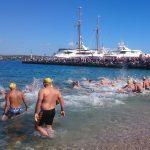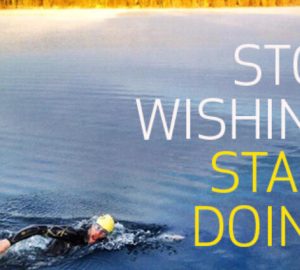The art of pace versatility
From what I’ve observed, many swimmers have about three or four gears for their swimming: all out sprint, hard training pace, long distance plod pace and swim down. Some swimmers are effectively reduced to two gears as there is little to distinguish between their sprint and hard training speeds or between their plod pace and swim down. Other swimmers have a wide range of gears and swim speeds to draw on.
If you watch enough swimmers you will also observe big differences between people’s sprint and long distance speeds. I’ve seen swimmers whose best time for a 100m sprint is 65 seconds but who can hold 70 seconds per 100m over 1500m and I know others who can break a minute for 100m but would struggle to repeat at 90 seconds on a longer swim.
There are physiological reasons for this. People who are natural endurance athletes will tend to swim with speeds within a much narrower band than those whose genetics predispose them to sprinting, but it’s also a result of training and attitude.
The attitude thing is based on the widely held belief that the harder you try the better results you will get. Clearly there is a correlation between effort and results but what we sometimes forget is that correlation is not perfect. There’s also a view in training sessions that with only limited time in the water you need to make the most of it, which results in the majority of your swimming being done at your maximum sustainable pace. This may be encouraged by your fellow swimmers, who can be suspicious if they perceive you to be slacking in any way. Besides, there’s no doubt that a lot of swimmers get a buzz from pushing their limits.
However, if you always train at the same pace, you will find it difficult to swim at other speeds, which is a shame because being comfortable swimming at a range of speeds is a useful skill to develop.
If you frequently watch the pace clock when you’re training you may have noticed that it takes a big jump in effort to swim five seconds per minute faster than your default pace. But have you also noticed that it can be tricky to swim 10 to 15 seconds slower per 100m? Your stroke feels unbalanced and awkward perhaps or you can’t get enough air because your stroke rate has slowed down and you’re breathing less often. Swimming slower is not always easier, unless you practise it. Interestingly, some of the fastest swimmers I know also have the ability to swim really slowly.
So why does it matter?
Firstly, from a swim development point of view, swimming slowly gives you more time to monitor and control what you are doing. It’s easier to practise technique improvements when you’re swimming slowly.
Secondly, it gives you more tactical options in an open water racing situation. In a 5k swim I found myself leading a pack of about five or six other people. I was pushing the pace and trying to drop the group but they had the advantage of drafting. I couldn’t swim away from them and therefore was at risk of exhausting myself at the front and being outsprinted at the end. I therefore slowed down until one of the other swimmers took the lead. His pace at the front was perhaps slightly slower than mine and so drafting felt extremely relaxed. After he had led the way for 10 minutes or so I went wide, sprinted past and opened up enough of a gap that he could no longer draft, and went on to finish a couple of minutes ahead. It wasn’t my fastest ever time but it was one of my most satisfying races. However, if I had never practised swimming at that slower pace, it may have felt too uncomfortable to use it tactically.
Finally, if you are considering doing any long distance swimming, you pace will almost certainly be slower than the pace you can sustain in a typical masters training session. If you know your swimming challenge will be done at a slow pace, why would you do most of your training at a much faster pace? You need to train aerobically if you want to be comfortable swimming long distances in open water.
I’m not saying you should never train hard or fast. You should. It’s even fun sometimes, in a strange sort of way. At the same time, try to become more aware of the pace you’re swimming and get comfortable with sometimes training at much less than your maximum speed. It may feel strange at first not to push yourself physically but instead of fighting for extra speed use the time to focus on good technique and just enjoy slipping through the water.






